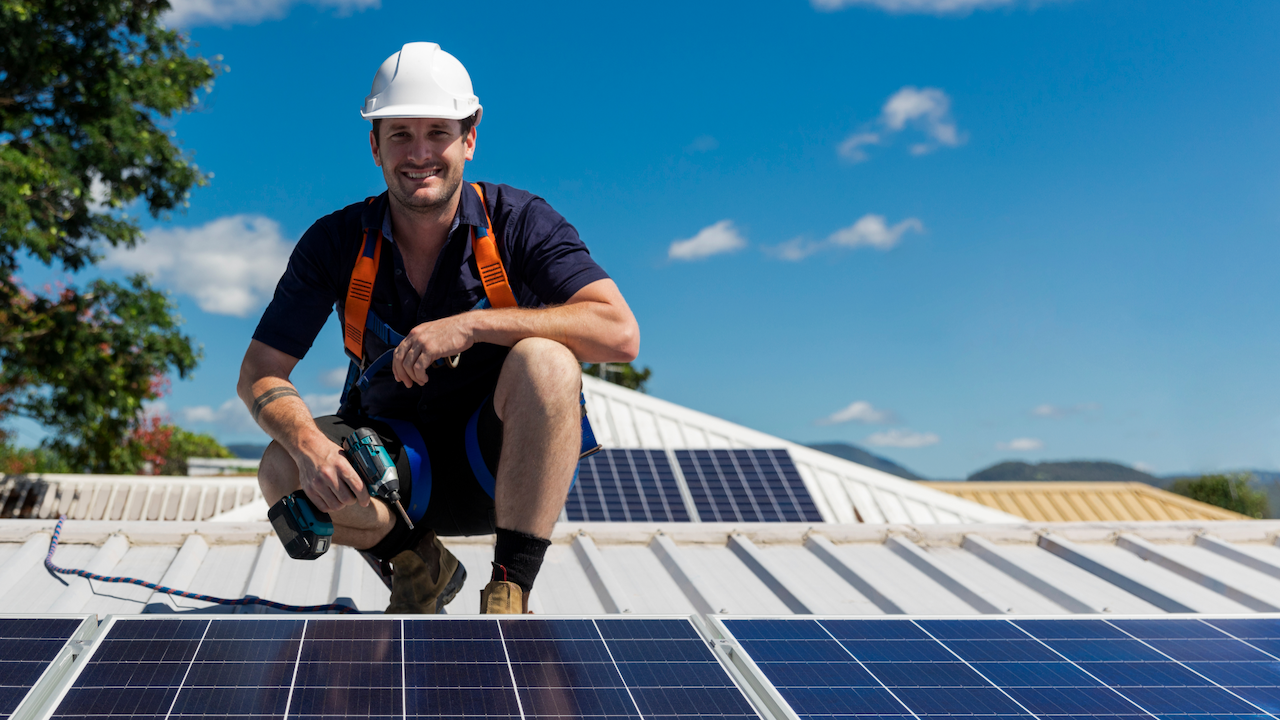Image source: Canva.com
Solar panel installations are not immediate.
The installation process involves several steps, including applications, paperwork, approvals, and more, in addition to the actual installation itself.
It typically takes between two and six months for the entire solar installation process to be completed and for you to receive clearance to use the system.
Let’s delve deeper into this process and provide you with a timeline, detailing each step along the way.
What’s the Timeframe for a Solar Installation?
Though the actual installation of solar panels can be completed within a few hours, the entire process typically spans two to six months. While this time frame might seem extensive, the investment pays off in 25 years of reduced electricity bills!
The installation process can be divided into three main stages:
1. Pre-installation: This involves selecting an installer and planning and preparing for the system.
2. Installation: This is when the solar company is on your roof, installing the panels.
3. Post-installation: After the panels are in place, they await the necessary permissions to be activated.
Before Solar Installation
Before any panels adorn your roof, several essential steps must be completed, including selecting an installer, conducting a site assessment, designing the system, obtaining permits, and procuring equipment.
Choosing an installer

Selecting a reputable solar installer is crucial for a successful installation. Look for companies with at least five years of experience, NABCEP certification, and positive customer reviews. Gather quotes from multiple installers to compare pricing and services.
Site assessment
After choosing an installer, they’ll conduct a site assessment to ensure your roof is suitable for solar panels. This assessment includes evaluating roof condition, size, orientation, sun exposure, and structural integrity. Expect this process to take about a week.

System design

Once your roof is approved, a solar engineer will design a system tailored to your home’s needs, considering factors like electricity usage, building codes, and utility requirements. The design process typically takes 2 to 3 weeks, possibly longer for complex systems.
Permit application
Obtaining building and solar permits is essential before commencing installation. Permit timelines vary by municipality, ranging from a few weeks to nearly two months. Your installer will handle the permit application process.

Equipment ordering and installation scheduling

Upon permit approval, your installer can proceed with equipment ordering and installation scheduling. Depending on equipment availability and installer availability, this stage may take 1 to 4 weeks.
Installation
It’s time for installation! Surprisingly, the installation of your solar panels is the shortest phase of the entire process. Installers will arrive at your home and work on your roof, installing racking systems, panels, and wiring for all your solar equipment. While smaller systems can be installed in just a few hours, larger or more complex setups may require a multi-day effort. Typically, a solar installation shouldn’t exceed a few days.

After Installation
City inspection

Following installation, a local inspector will assess the system’s compliance with building codes and safety regulations. This ensures proper installation and addresses any potential issues before activation. While the inspection itself may only take a few hours, scheduling availability may extend the timeline to about a week.
Interconnection process & permission to operate (PTO)

Once the inspection is passed, your utility company will interconnect your system to the grid and grant Permission to Operate (PTO). This involves installing a new electric meter to monitor solar energy production and conducting a final inspection. While this process may take a few weeks, once completed, you can start utilizing your solar panels.
Key Considerations for Solar Installations
Embarking on a solar journey may seem daunting, but the rewards are well worth the effort! Here are some key points to remember throughout the process:
Choose a reputable installer: The choice of installer significantly influences your overall experience. Ensure you select a reliable installer capable of addressing your inquiries and addressing any concerns that may arise.
Exercise patience: Solar installation is not a quick endeavor and can span several months, depending on various factors. Stay patient; soon enough, your investment in sustainable energy will be operational.
Prepare yourself and your home: Before proceeding with solar installation, ensure that solar energy is a feasible option for your residence. Consider factors such as your financial readiness, the condition of your roof, and the solar incentives available in your state.
Key points
1. Solar panel installations typically span between two and six months to complete.
2. The actual installation itself is relatively brief, usually lasting from a few hours to a few days.
3. Permit application and approval constitute the lengthiest phase, lasting up to two months.
4. Following installation, inspection by a city or local representative and interconnection by the utility company are necessary steps.
5. Choosing a reputable solar company is paramount, so prioritize finding a highly-rated local professional to guide you through the process.





